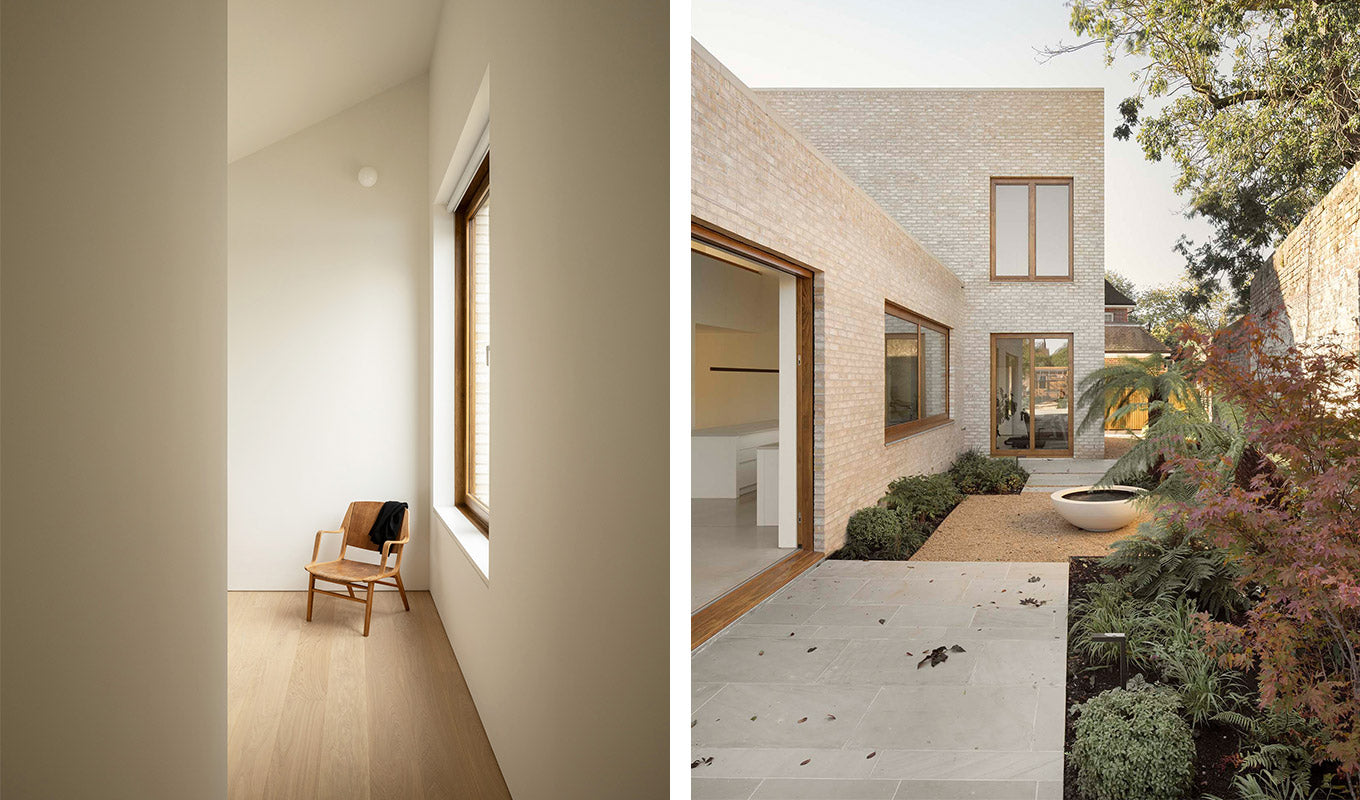Ground Source Heat Pumps: Wimbledon
Surrounded by gardens at the end of a cul-de-sac in the heart of Wimbledon village, South borough of London, this detached low-energy home made of timber frame construction is a four-bedroom house that responds to its context with sloping roofs and a sympathetic scale. Too, the dwelling is broken down into three smaller volumes that define the external appearance and internal organisation.

As ERBAR MATTES, architects of the design, explains: "Cooking and dining are enjoyed within a light-filled double height space on the private northern side, facing a tall 17th-century boundary wall. An open stair leads from this family hub to the first-floor bedrooms. The southern volume of the building is occupied by a living room with fireplace on ground floor and a master bedroom suite above. The volume along the western boundary accommodates a study, a gym and a utility space on ground floor and three bedrooms above."
Achieving its Low-Energy Home Credentials
Continuing, "...the home adopts a low-energy design approach with a highly insulated and airtight lightweight timber frame structure that was pre-manufactured off-site, a ground source heat pump with 120m deep piles, and a ventilation system with heat recovery. The ventilated cavity wall façade is constructed of flush pointed water-struck clay bricks and soft lime mortar, allowing the quality bricks to be re-used in the future."
"Timber windows and doors are made of sustainable Accoya. The innovative timber structure has been detailed to minimise vertical movement utilising LVL wall plates and face-mounted joist hangers. A solid concrete floor with underfloor heating provides thermal mass to regulate the internal temperature."

What is a Ground Source Heat Pump?
A ground source heat pump, also known as a geothermal heat pump, is a heating and cooling system that transfers heat between a building and the ground. It utilises the relatively constant temperature of the earth's subsurface to provide heating, cooling, as well as hot water for residential and commercial buildings.
Here's how a ground source heat pump generally works:
- Heat Exchange: The system consists of a series of pipes, typically filled with a heat transfer fluid, which are buried underground in either horizontal trenches or vertical boreholes. These pipes form a closed loop circuit.
- Heat Absorption or Rejection: During the heating season, the fluid circulating through the underground pipes absorbs heat from the earth and carries it together into the building. In the cooling season, the process is reversed, the heat from the building is transferred to the cooler ground.
- Heat Pump Mechanism: Within the building, a heat pump unit contains a compressor and a heat exchanger. The compressor increases the temperature of the heat absorbed from the ground to a level suitable for heating the building; when in cooling mode, the process is reversed, with heat being expelled from the building.

Benefits & Negatives of a Ground Source Heat Pump
Ground source heat pumps are considered highly efficient because they harness renewable energy from the ground, which remains relatively stable in temperature throughout the year. This can lead to significant energy savings compared to traditional heating and cooling systems, particularly in regions with moderate climates. Additionally, Ground source heat pumps produce fewer greenhouse gas emissions compared to conventional heating and cooling systems, making them environmentally friendly options. However, they do require a significant initial investment for installation.

Project / Brand: ERBAR MATTES
Photography: ERBAR MATTES


